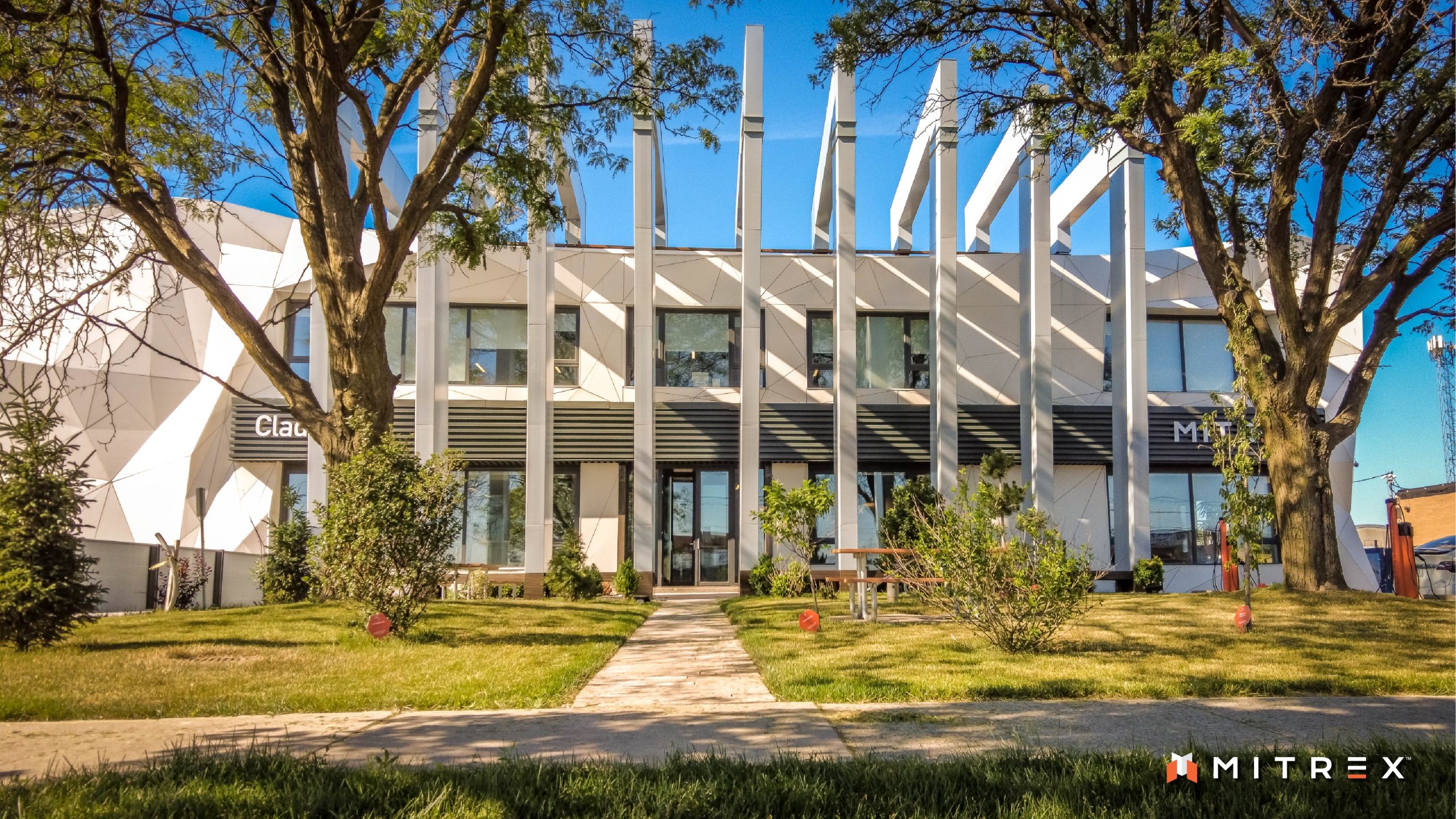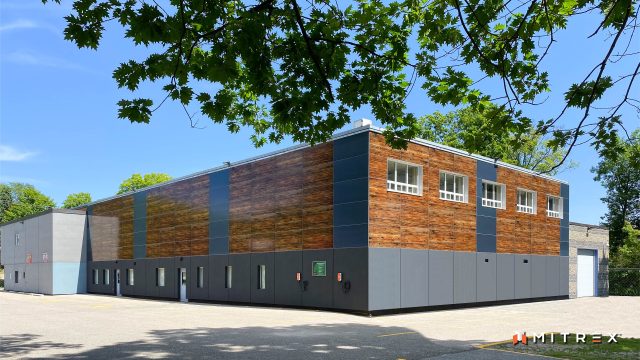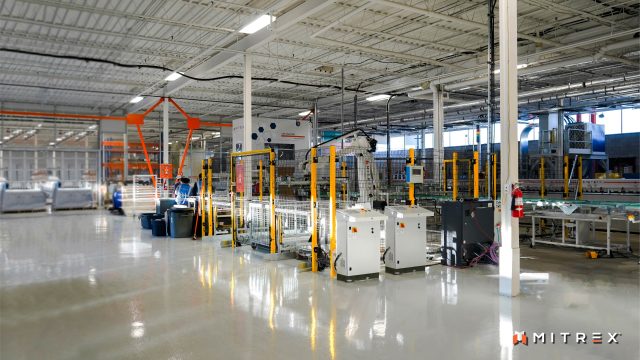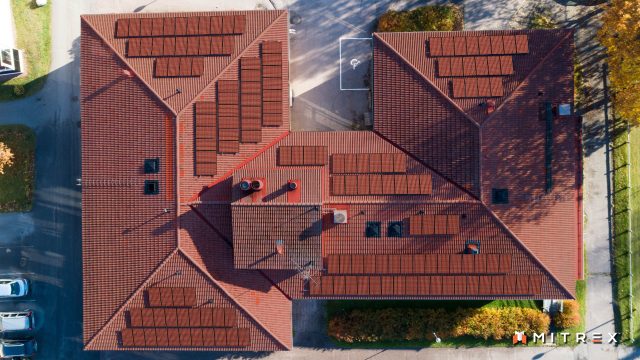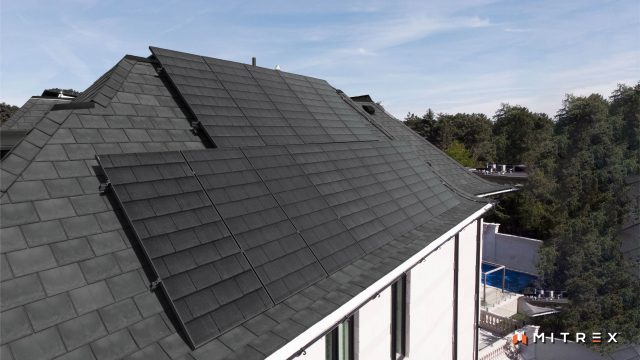-
Headquarters -
41 Racine Rd, Etobicoke, ON, M9W 2Z4
-
Year established -
2003
-
NAICS -
335990 - All other electrical equipment and component manufacturing
-
Major expansions -
2023
-
Employees -
100
-
Exports -
United States, Middle East
-
Download -
Mitrex
When Danial Hadizadeh set out to combine solar panels and building cladding into a single product, he reached back to his teenage years and of all things, Leonardo da Vinci's ornithopter drawings.
At age 17, Hadizadeh was fascinated with da Vinci’s ornithopter concept and decided to make a toy that replicated the idea. He designed a prototype and raised seed capital from his family. To make the toy fly longer he designed a new type of rubber that released its energy over an extended period of time rather than all at once. The result was a success and sales of 200,000 units over three years.
Mitrex, Hadizadeh’s latest manufacturing venture, is similar in principle. Founded in 2019, the company brings together two well-established products–solar panels and building cladding–and combines them to build something novel. The product, which is called building-integrated photovoltaics (BIPV), was launched in 2019 after four years of research and development. Mitrex built on the work of Hadizadeh’s cladding company, Cladify, and turned solar panels into a building material that allows structures to become miniature power stations. Now employing 100 people at its near-fully automated facility in the Toronto suburb of Etobicoke, the company is the world’s largest manufacturer of BIPV.
Construction has a vital role in creating sustainable cities.
“Construction has a vital role in creating sustainable cities,” Hadizadeh says. He makes it clear that Mitrex’s mission is not simply to manufacture quality products, but also to have a positive impact on society and environment. There is a growing pressure on residential and commercial developments to become more sustainable, he explains. The path to achieving that involves reducing grid energy consumption through use of solar power. But negative perceptions about the appearance of traditional solar panels and the limited space roofs provide for their application put barriers on harnessing that power.
The idea behind Mitrex was to overcome these barriers through innovation. The company’s first key innovation was the development of photovoltaic panels that can be mounted on walls the same way as cladding. This allows a building’s vertical surfaces, which are often vastly larger than the roof areas traditionally associated with solar panel applications, to generate electricity. Using traditional cladding installation methods also keeps project timelines comparable with cladding and eliminates the need for additional training.
The second key innovation was customizing the appearance of photovoltaic panels. Using state-of-the-art equipment and a proprietary technique, the company can infuse virtually any kind of colour and pattern into the tempered glass that covers the panel. Whether the desired appearance is red brick, limestone, or a metallic material, Mitrex can customize it based on the customers’ design. Efficiency loss resulting from this integration was a concern. In response, the company invested heavily in R&D to limit that loss to about 10 per cent compared to traditional solar panels. That loss is often offset by the additional solar power generated through the use of a building’s vertical surfaces.
Mitrex is a testament that a Canadian company can compete in this market. The requirements: a high degree of production automation and products that have innovative features and superior safety and quality standards.
Mitrex’s portfolio has grown since its launch into a complete set of BIPV products that include solar facades, solar railings, solar roof panels and solar glass. Hadizadeh underpins that potential greenhouse gas reductions from solar power generation in buildings and design flexibilities enabled by Mitrex’s innovative products are game-changers for architects, developers, and contractors.
Competing in the photovoltaic products market as a North American manufacturer is not easy considering that a majority of these products are currently produced in jurisdictions with extremely low labour costs such as China. But Mitrex is a testament that a Canadian company can compete in this market. The requirements: a high degree of production automation and products that have innovative features and superior safety and quality standards.
The current setup at Mitrex’s facility contains three separate production lines that together achieve close to 95 per cent automation. The first line prepares the tempered glass that goes over the photovoltaic cells and infuses it with the desired colours and patterns, using a proprietary process. The second line produces the photovoltaics in fully automated cells and lines them up, using robotic arms, on the tempered glass. The third line laminates the back of the panel and installs electrical connectors. Once these steps are completed, aluminum honeycomb material is affixed to the back of the panel. Finished products are then packaged and shipped to their destinations.
Achieving that high level of automation was made possible through a $200 million upfront investment in state-of-the-art machines and technologies purchased from suppliers all across the world, mostly from companies outside North America. Hadizadeh says that a facility comparable in size would normally require about 300 production employees but his company is able to generate the same output with 50.
Mitrex provides this ‘unicorn product’ which people don’t believe can exist. But our product is, in fact, real.
In addition to the labour cost savings and resulting price-competitiveness, automation ensures that Mitrex’s photovoltaic products can meet some of the world’s most stringent quality and safety requirements. Because the products are both solar panels and building materials, the company needs to meet the safety requirements in both categories. Notable certifications Mitrex achieved so far include such industry gold standards as the California Energy Commission listing for solar panels and Miami Dade County approval for building materials.
“Mitrex provides this ‘unicorn product’ which people don’t believe can exist. But our product is, in fact, real,” Hadizadeh says. Mitrex has already completed a number of projects, including a courthouse retrofit in Midland, a church on Bond Avenue in the Toronto suburb of North York, and a commercial office in Oshawa. Mitrex is also involved in the development of the tallest BIPV residential building in North America at the St. Mary’s University in Halifax, Nova Scotia. More projects are in the hopper, including several new multi-storey building developments in the GTA and a high-profile building in Dubai. At home, the company is also working with the Ministry of Transportation on solar noise barriers for highways as well as projects with universities and Toronto Community Housing.
Hadizadeh notes that demand in Canada has a lot more room to grow with better policy incentives for the adoption of green energy technologies. Mitrex already sees strong demand for its products in the Middle East and a growing interest in the United States, boosted by new incentives for solar adoption in the Biden administration’s Inflation Reduction Act (IRA).
Negative carbon footprints are the future. We put out enough carbon as is–we should be helping to remove it.
The company management believes the IRA will support a much faster solar adoption in the United States than Canada, along with stronger support for domestic manufacturing of solar products. That was one reason why Mitrex decided last year that its second manufacturing plant will be located in Rochester, NY. The company initially considered expanding in Canada but the anticipated effects of the IRA, cheaper real estate, competitive energy and labour costs as well as investment incentives in the form of tax breaks south of the border were difficult to turn down.
Mark Gebrail, the company’s chief strategy officer says that, with the inception of the IRA, the United States has become a much attractive green energy market. He adds that Canadian manufacturers find it difficult to showcase their products domestically even when internationally, they are received with open arms.
“The government of Canada could lead by example, by retrofitting its own buildings” Gebrail says. He calls for the City of Toronto to make the Toronto Green Standard criteria more ambitious too: “Right now, they can easily be met by installing only a few solar panels, which has minimal environmental benefits.” Hadizadeh adds, even “net-zero” is not a sufficient target anymore: “Negative carbon footprints are the future. We put out enough carbon as is–we should be helping to remove it.”
Hadizadeh also recommends all levels of Canadian governments align their climate change adaptation goals with the evaluation criteria for incentive programs that support domestic manufacturing. Besides direct job creation targets for incentive programs, a higher emphasis could be placed on the jobs created across the entire supply chain or what those jobs support, i.e. transition to green energy.
Despite its recent investment in the United States, Mitrex is committed to manufacturing in Ontario.
Despite its recent investment in the United States, Mitrex is committed to manufacturing in Ontario. Looking ahead, Mitrex wants to keep its focus on North America, and build its brand and the green energy market further. The company is pursuing new R&D projects to make new products, including solar siding and paint, which are the largest construction material markets in the United States. Mitrex management believes that international growth will follow organic North American growth.
In the near term, the company will concentrate its efforts on R&D, marketing, attending international fairs, and increasing awareness about its products among general contractors and building developers. These are the decision makers who play a key role in the adoption of Mitrex’s renewable energy products.
For more information about Mitrex, visit their website.
Published: April 11, 2023

Solar Ship
Solar Ship is a manufacturer of hybrid aircraft. The primary goal of the company is to produce hybrid aircraft that are able to take off and land nearly anywhere to allow for the shipment of goods and emergency services to the most remote regions of the world.
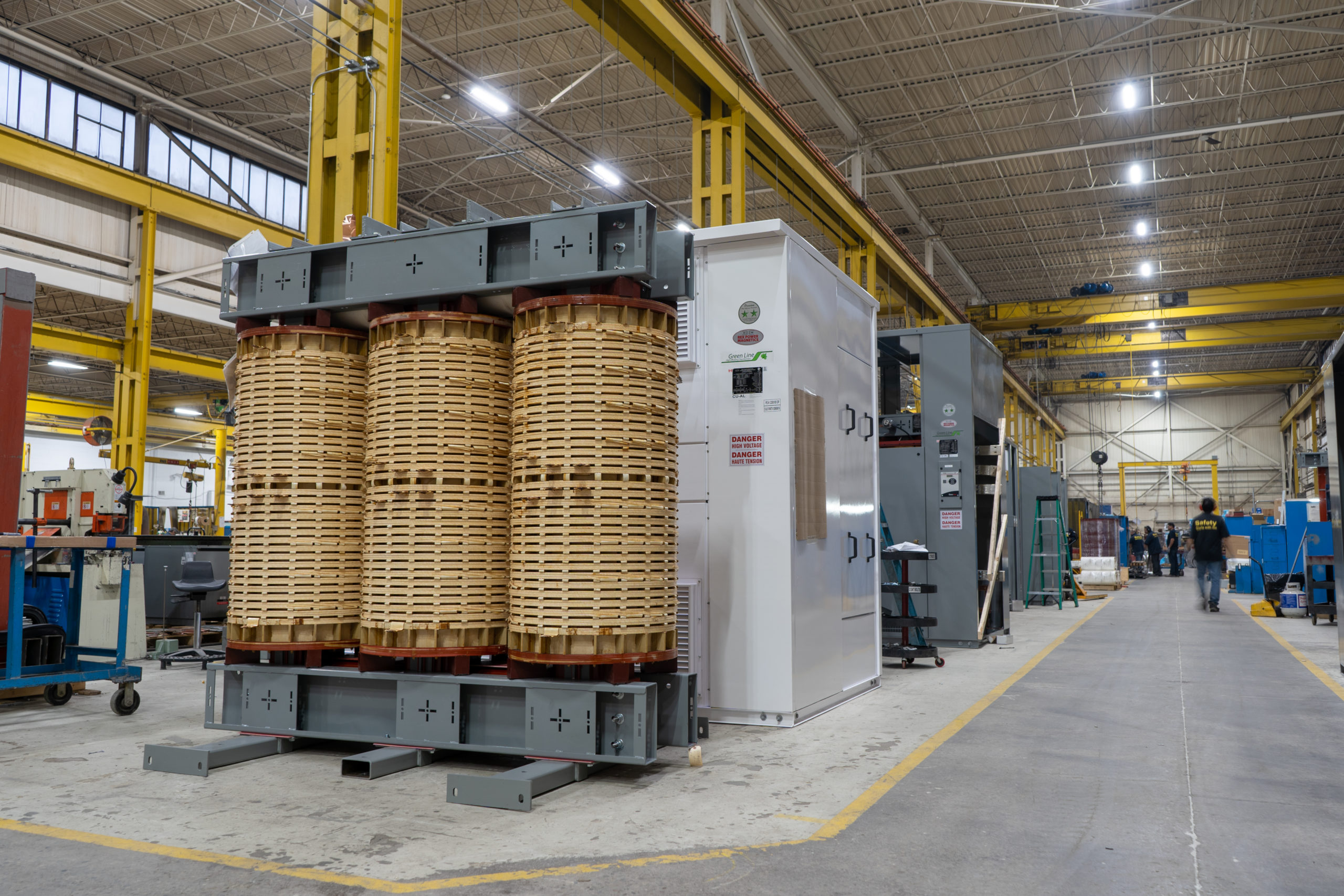
Rex Power Magnetics
Rex Power Magnetics specializes in manufacturing low to medium voltage, dry type power, distribution and specialty transformers. Bursting at the seams of its 145,000 square foot facility in Vaughan and preparing to celebrate its 50th year in business, the company employs 290 people and generates annual revenue of $85 million.
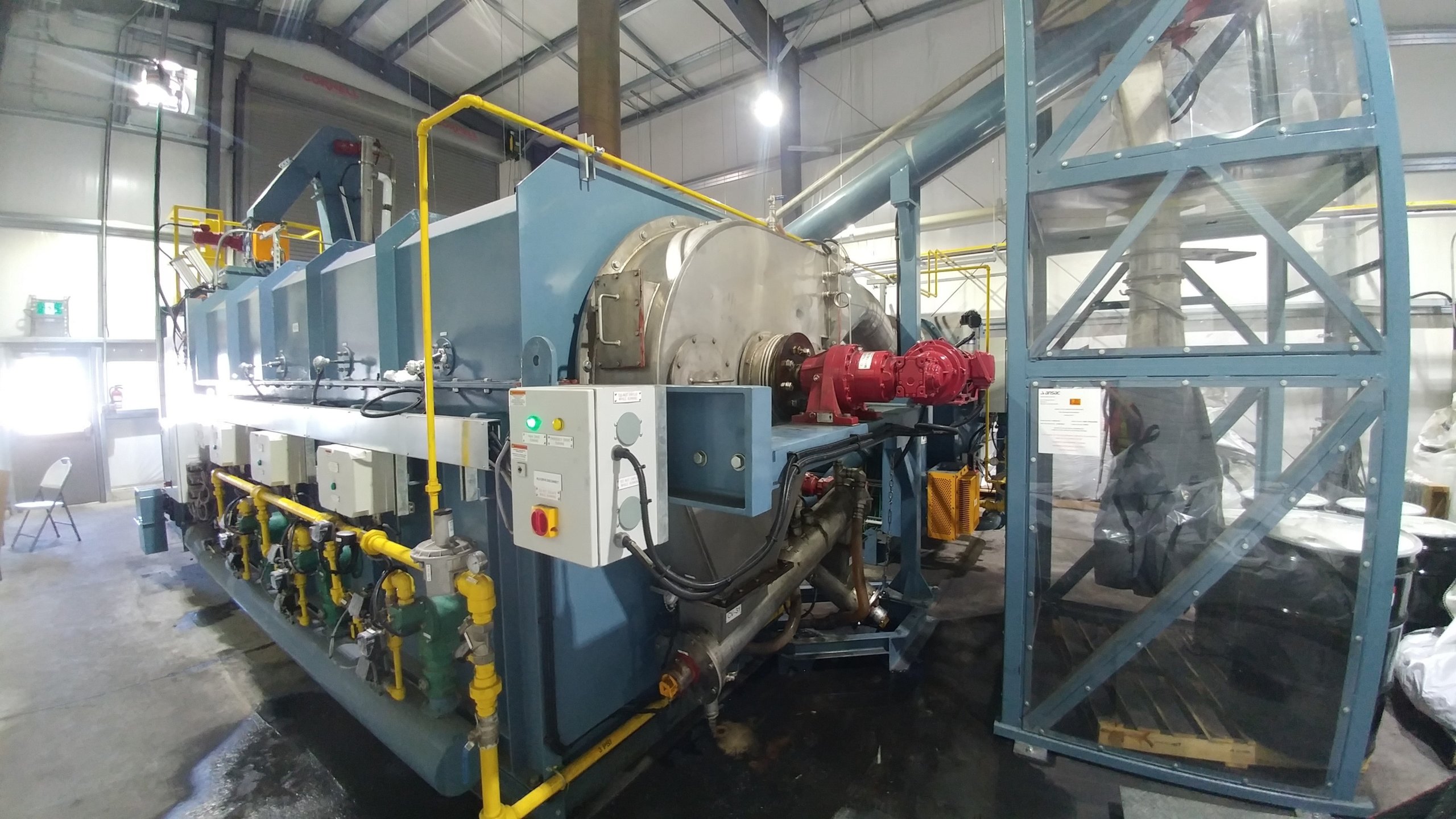
CHAR Technologies Limited
Headquartered in Toronto, Ontario, CHAR Technologies Limited (CHAR) is an innovative cleantech company that specializes in biocarbon fuel development and provides custom equipment for a wide range of industries. CHAR has quickly become a leader in green innovation through its use of Canadian technology to create environmentally sustainable solutions.
